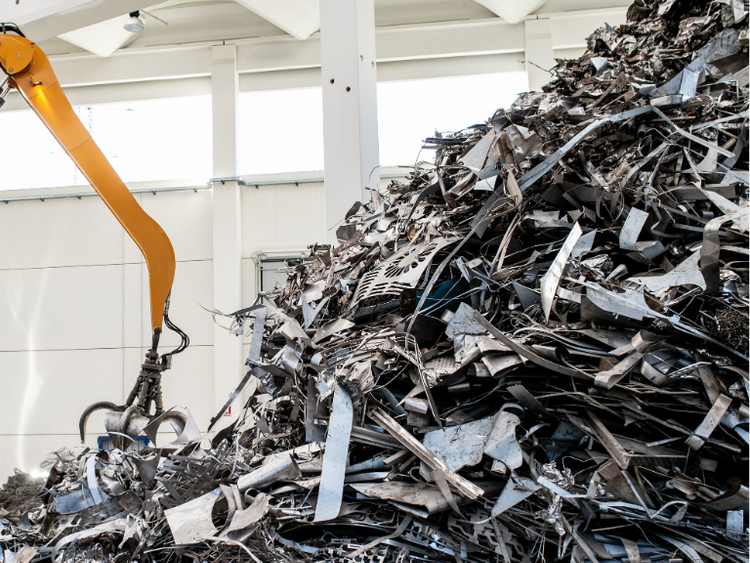Market

September 24, 2024
Fed's move to slash interest rates is poised to boost scrap
Written by Stephanie Ritenbaugh
The Federal Reserve’s move last week to cut its benchmark interest rate by a half-point is expected to boost labor, construction and manufacturing, which is good news for scrap demand.
Still, it may take time for those sectors to feel those effects, noted Veronika Akhmadieva, senior economist, economics and sustainability for CRU Group.
“The lag for the manufacturing sector will likely be longer,” Akhmadieva said. “In the case of the construction sector, for instance, mortgage rates respond to rate cuts quite quickly and as such provide support for the residential subsector. In the case of manufacturing, we can still see fairly quick positive response from the auto sector as auto loans will again respond to rate cuts fairly quickly and that will boost the demand.”
The 50 basis point cut brings the federal funds rate to between 4.75% and 5% after holding them at a 20-year high. While the rate sets short-term borrowing costs for banks, it impacts other products such as mortgages, loans and credit cards, making borrowing and refinancing easier for businesses and consumers.
“This decision reflects our growing confidence that, with an appropriate recalibration of our policy stance, strength in the labor market can be maintained in a context of moderate growth and inflation moving sustainably down to 2%,” Chairman Jerome Powell said in a press conference following the Fed’s two-day meeting.
The Fed’s move is meant to boost the job market, which has shown some signs of slowing. In addition, cracks have been forming in manufacturing demand and consumer spending, so many are looking to rate cuts to bolster the economy.
Still, Fed Chairman Jerome Powell noted that the economy is showing strength.
“Recent indicators suggest that economic activity has continued to expand at a solid pace,” Powell said. “GDP rose at an annual rate of 2.2% in the first half of the year, and available data point to a roughly similar pace of growth this quarter. Growth of consumer spending has remained resilient, and investment in equipment and intangibles has picked up from its anemic pace last year.”
Net growth in job creation correlates to increased steel consumption, and of course, more scrap demand as recycled metals serve as the primary feedstock for steel production. Construction activity, a key sector to watch for steel demand, showed overall job gains were partly driven by construction hiring, according to the latest data from the Labor Department.
The sector added 34,000 jobs in August while the industry’s unemployment rate fell to 3.2 percent, the lowest August rate in the 25-year history of the data, according to an analysis by the Associated General Contractors of America.
Overall, the unemployment rate in the U.S. has moved up but remains low at 4.2%, Powell noted.
If lower interest rates put downward pressure on the U.S. dollar, it would make commodities more attractive overseas.
Joe Pickard, chief economist and director of commodities for the Recycled Materials Association, said the unusually large rate cut is both good news and not-so-good news.
“The Fed thinks that labor markets are cooling significantly, otherwise they wouldn’t have gone with a 50 basis point cut. They have the dual mandate to both maintain price stability and also full employment. Clearly, they see that tilted more toward risks for the labor market at the current interest rate level,” Pickard said. “So it’s good in that it’s anticipated to spur growth, but less good in that they’re more concerned about the economy than, I think, what a lot of people were anticipating.”
Overall, there’s the “expectation that lower rates will bring down borrowing costs, which will help incentivize both consumer and business borrowing,” Pickard continued. “Hopefully that will provide some support to construction in the housing market and other loans like auto loans and consumer spending. All those things tend to be positive for the U.S. manufacturing industry and for metal demand by extension. So the expectation is that it will be generally supportive for recycling.”





